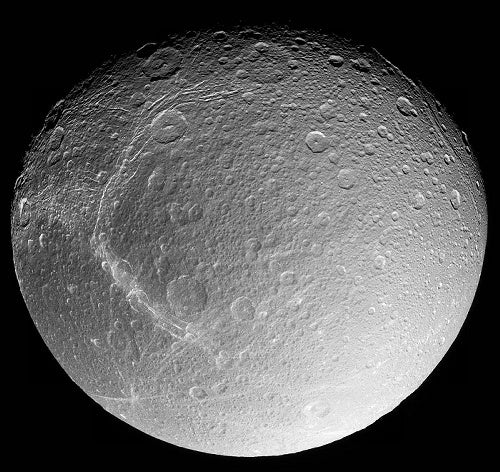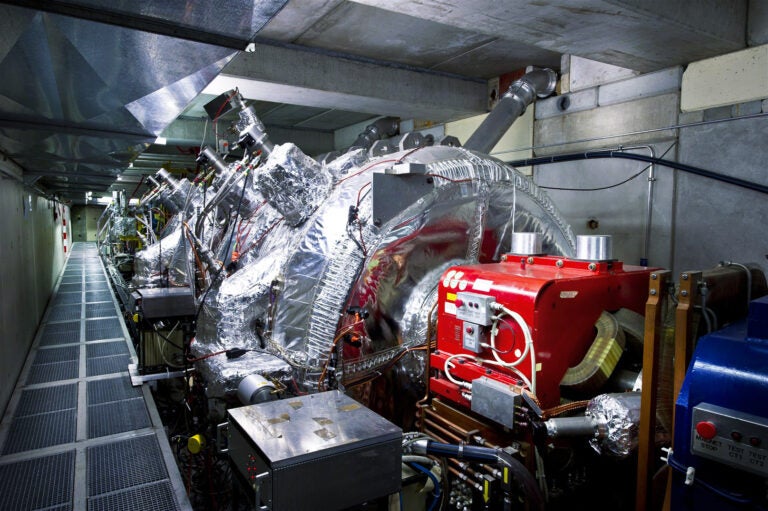
Cassini also observed Titan from the night side, recording sunlight as it filtered through the atmosphere. The detailed images reveal an abundance of detached haze layers that had never been seen before. The layers extend hundreds of miles above the moon’s surface.
One day after the Titan flyby, Cassini made a more distant pass by the icy moon Dione. At closest approach, the spacecraft came within 45,000 miles (72,500 km) of the surface. This is half as far away as the Voyager spacecraft managed in the early 1980s, so the best Cassini images were about twice as sharp as any seen before.
The images reveal a heavily cratered surface with surface fractures that create a complex, braided structure. Planetary scientists have been intrigued by the wispy-looking braids ever since the Voyagers first saw them. Researchers had suspected they were thick ice deposits, but the Cassini images show the markings are bright ice cliffs apparently formed by tectonic processes.
December 21, 2004
On December 13, the Cassini spacecraft made its second close pass by Saturn’s giant moon, Titan. Although Titan, the only moon in the solar system with a thick atmosphere, remains mysterious, planetary scientists seem poised to unravel some of its deeper secrets.
The spacecraft flew within about 750 miles (1,200 kilometers) of Titan’s surface, roughly the same altitude as during its first close encounter October 26. By comparing images taken during the two flybys, scientists got the first direct evidence of changing weather patterns on Titan. During the first flyby, Titan’s skies appeared devoid of clouds, except for a cloud complex above the moon’s south pole. But during the recent flyby, Cassini recorded several extensive patches of clouds in mid-latitude regions.
“We see for the first time discrete cloud features at mid-latitudes, which means we see direct evidence of weather,” says Kevin Baines of the Jet Propulsion Laboratory and a member of the Visual and Infrared Mapping Spectrometer instrument team. By following the changing weather patterns, adds Baines, team members will be able to discern wind speeds and atmospheric circulation over regions they hadn’t been able to measure before.
“This is one of the most surprising results so far,” says imaging-team leader Carolyn Porco of the Space Science Institute in Boulder, Colorado. “It just wasn’t what we expected.” Cassini will come much closer to Dione 10 months from now. In October 2005, the spacecraft will skim within 300 miles (500 km) of the moon’s surface, and undoubtedly make new discoveries while raising more questions.
The next big event for Cassini comes December 24. That evening, Cassini will deploy the Huygens probe. After a 3-week journey, the probe reaches Titan January 14. It then will parachute through the moon’s atmosphere, measuring the air’s temperature, density, pressure, wind speed, and composition during a nearly 3-hour descent.
If all goes well, Huygens may survive all the way down to Titan’s surface. There, it could find anything from a rock-hard crust of ice to a lake of liquid hydrocarbons. A camera will image the ground, and an instrument package will characterize surface properties. All the information will be sent to the Cassini orbiter, which will relay the precious information to eager scientists on Earth.









